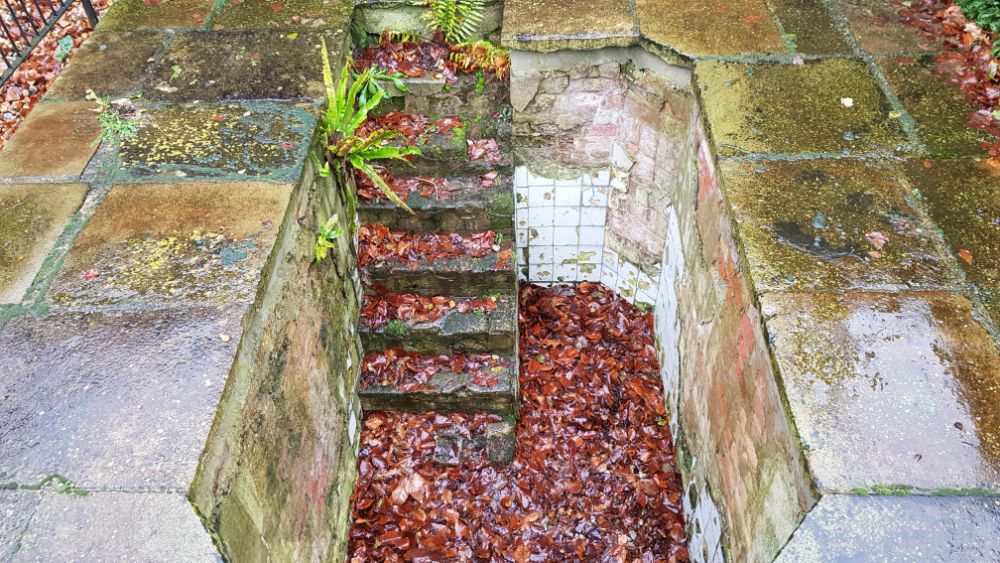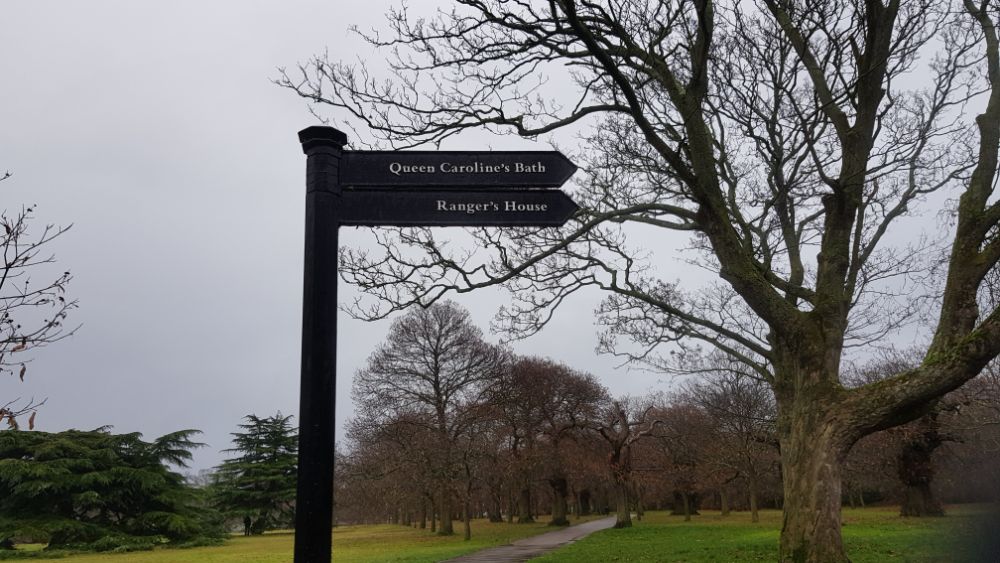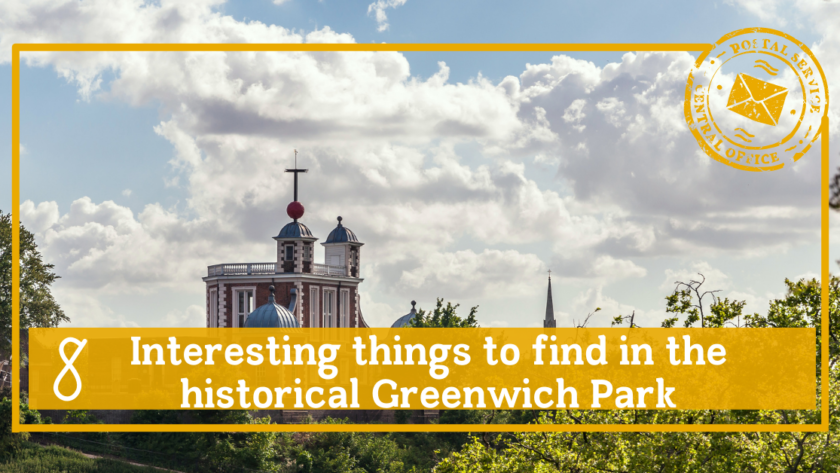Greenwich park is saturated with history dating back thousands of years. It’s no surprise there’s an abundance of things to explore here. For example, early stone tools and remains of Roman buildings have been found. The Dane’s occupied Greenwich in the 11th century, and it has passed through the hands of many royals since. One of the most famous is King Henry VIII himself, who was born in the Palace of Placentia – now Greenwich Palace. It’s easy to spend a whole day here, wandering underneath the oak trees and exploring the museums.
Instead of explaining the museums on offer, I want to show you the smaller things to explore. They’re unusual and will take you off the main paths, and to the mysterious winding ones.
1. Queen Caroline's bath
Firstly, it’s said that Queen Caroline led an interesting and boisterous life, much to the disappointment of the Royals. She was the estranged wife of King George IV and lived in Montague house from 1798-1813. Apparently, her parties were fantastic, but wild rumours almost got her into trouble. After that, she left England for good in 1814 and went to Europe.
Unfortunately, her house was demolished a year later and all that was left was the outline of her stone bath. If just looking at her bath is anything to go by, it must have been quite the house! I would love to have a deep bath like that. Not sure it would be very eco-friendly though, so I’ll just have to wait for my next spa day.
Now the bath is surrounded by a nice hedge and railings. But you can still get a good look at it and wistfully imagine, though. It’s located in the southwest corner of Greenwich Park. When you enter through Chesterfield gate turn left, follow the path and it’s on your left. To read more, check out the Royal Parks website here.

2. Anglo-Saxon burial mounds
By far one of the most interesting things about Greenwich park is the burial mounds here. It’s an Anglo-Saxon barrow cemetery that dates back to the 6th century. Upon excavations, they found glass beads, hair, and even swords and shields. There are about 1,000 sites like this in England and 40 are barrow cemeteries. What’s more, it’s one of the largest.
You can literally walk over the mounds as they are not fenced off. Depends if you believe in any bad luck I guess! It can be easy not to notice them, and mistake them just for lumps in the ground. I used to run that way through the park for years and never knew they existed.
The cemetery is at the top of the hill overlooking Greenwich. In the distance, central London can be seen. In the 5th century, this would have been an uninterrupted view across Greenwich into the distance. It would have looked quite magnificent. There’s more information on these burial mounds here.
3. Ranger's house & rose garden
Next up is a cheeky 2-in-1 but you’ll see why. The Rangers House was open to visit pre-covid and hopefully will be again soon. It’s a little overlooked in terms of the museums to visit, so I included it here. Interestingly it houses an art collection by the 19th century businessman, Sir Julius Wernher.
The building is a stunning Georgian villa that houses over 700 pieces of art! The house itself was built in the 1720s by Francis Hosier. On one side it’s open to Blackheath, and the other opens into Greenwich Park. There is a lot of history to the Rangers House which you can read more about here.
The Ranger’s House will now be recognised as the Bridgerton’s family home in the Netflix show Bridgerton.
On the Greenwich Park side lies the famous rose garden, sitting directly in front of the house. It also belongs to the Wernher Collection and is a work of natural art. It was first planted in 1960, and during the flowering peak in the summer, it’s such a beautiful sight! You almost feel like royalty as you walk down the aisles of roses. Pick a bench along the perimeter of the garden and the afternoon will melt away.

4. Roman fountain
Fourthly, there is this Roman fountain. Almost hidden away among green bushes sits a Roman spring-fed mountain. The stones look weathered and are one of the main representations of age in this park. It’s easy to feel the history of time with this one too.
It’s thought to have been constructed around 1855, but unfortunately, the spring was closed up in the 1950s. So it had a good run. Such a shame it’s not still flowing, but we wouldn’t want anyone to get sick! More information can be found here.
5. Queen Elizabeth's Oak
A further find is an oak tree in the centre of Greenwich Park. It’s no longer standing, enclosed in railings, and has an interesting history. It is named Queen Elizabeth’s Oak and dates back to the 12th century. The famous Tudor family is linked to this tree. Apparently, King Henry VIII and Anne Boleyn danced around the tree, and Queen Elizabeth I relaxed under its shade.
The tree died in the 19th century, but thick ivy had grown around it, holding it up for 150 years. Its final topple was during a thunderstorm in June of 1991. Coincidentally the same month and year I was born… Of no importance or relevance, I’m sure… Thankfully a new oak tree was planted in 1992, and it’s growing healthily. To read more about the tree, read here. It can be found near the Roman drinking fountain.
6. The Wilderness Deer Park
Notably one of London’s oldest deer parks, it’s amazing to catch a glimpse of the resident Red and Fallow Deer here. They can still be a little elusive, despite having a smaller area to roam these days. The good news is they are no longer hunted in the park. Deer were introduced by King Henry VIII in 1515 when the park was more wilderness. They roamed freely until 1927 when they were moved into the southeastern enclosure, due to the increase of vehicles.
It’s a great little adventure to find the gravel paths that lead to their enclosure in the flower gardens. One particularly obvious path is near the duck pond. There is a more elusive one nearer to the southeastern side of the flower gardens too. Here you will wander through trees and shrubbery, a little nature reserve in itself, leading to their enclosure. Enjoy this little magical adventure! You can read more about it here.
7. The Flower Garden
A further find, the flower garden is home to the deer enclosure. It’s also a great place to settle down for a picnic. You are surrounded by green grass, quirky-looking trees, and beautiful flowerbeds. Gardeners have been tending to the flowers since the 1890s. Flowers are changed with the seasons so the garden looks fresh and beautiful all year round.
There is a pond with ducks that love to be fed and is great for the kids too. The winding paths lead through the trees and feel beautifully isolated. Benches instantly give space for some peace. No dogs or ball games are allowed, so it’s guaranteed to be peaceful. In the summer it can be found to hard a spot as it does get packed full! Read more here.
8. Public standards of length & shephard gate clock
The public standards of length can be found on the wall outside the Royal Observatory, placed there in 1866. It was the height of science as it gives the official lengths of a yard, foot, and inch. People travelled from far and wide to measure their sticks against these lengths, so it was serious business.
Sat above the public standards of length is the 24-hour Shephard Gate Clock. This clock was installed in 1852 and was the first clock to show Greenwich Mean Time (GMT) to the public. Hoorah! It’s considered one of the most important clocks ever made, and synchronised time all over England. Time signals were even sent to Massachusetts via the transatlantic submarine cable. It’s an early example of an electric clock using a slave mechanism, leading to it also being called the slave clock. Take a look here for more details.
Bonus - Time ball of Royal observatory
Lastly, although I haven’t included the Royal Observatory itself in this list, this is a special thing to do! Plus it’s free, as it can be seen from within Greenwich Park. The bright red time ball at the top of the observatory is one of the earliest public time signals too.
Sitting at the top of the hill, it could be seen for miles around. Ships used it to calibrate their clocks from 1833. At 12:55 every day, the ball starts to rise to the top. At 13:00 exactly, it abruptly falls back down to the bottom. This only happens once every day, so be sure to catch it!
Interestingly, this mechanism is also used at the Sydney Observatory, Australia. I distinctly remember doing a little tour when I visited Sydney. Upon hearing that fact I almost jumped up and down in excitement, exclaiming “I’m from Greenwich! I’m from Greenwich!”
By all means, read more about this here.
Greenwich Park is an amazing and versatile place to spend the day. I feel like each time I go I find something new. Whether you want to spend your time having a family picnic, or taking a relaxing walk, there’s something for everyone.
There’s plenty of space to be active, with a tennis court and a dedicated grassy area for cricket and football. Also multiple museums for learning. There’s even easily-accessible history dotted around, and plenty of nature. However, I haven’t included everything in this article, and it was hard choosing which ones to add!
To read more about things to do in Greenwich, read my article here. I hope that you have as much fun exploring this historic park as much as I do. Let me know if you find anything else interesting.



[…] Greenwich is full of history, not limited to the Old Royal Naval College. Make sure to dedicate an afternoon or even a whole day to really immerse yourself, and take your time exploring. I’ve also written a couple of articles to help you discover more of Greenwich in general, and Greenwich Park. […]